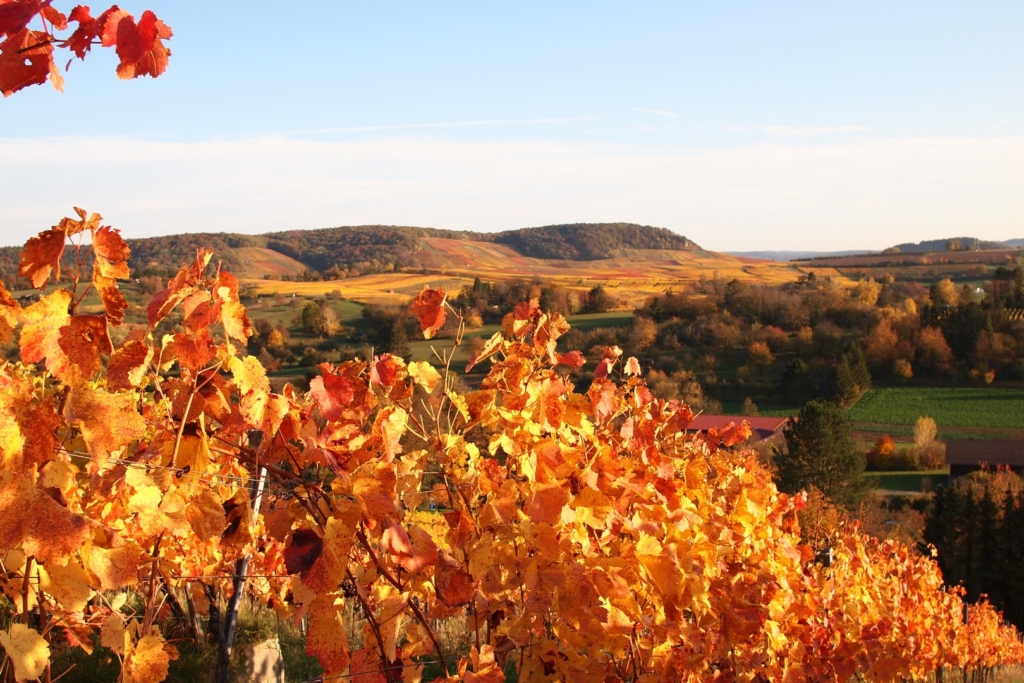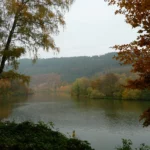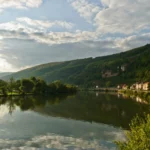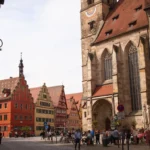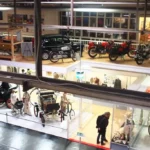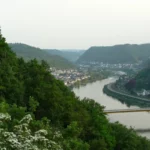Last Updated on 12/09/2024
From this section the Castle Road leaves the Neckar Valley and runs parallel to the A6 Autobahn towards Nuremberg. The three main attractions on this section are Sinsheim, Schwäbisch Hall and Rothenburg ob der Tauber. There are also a few smaller, lesser-known places along the way that are worth a visit. We also take a look at what’s to the south of the A6 Autobahn, covering the section from the Odenwald to the Black Forest and the region around Stuttgart. Top attraction is here Maulbronn.
#Castle Road
Autumn in Swabian Tuscany
Part 1 (with map for whole route) Along Neckar from Mannheim to Eberbach.
Part 2 Along Neckar from Zwingenberg to Bad Wimpfen
Part 4. Romantic Franconia map
Maps around:
Odenwald sightseeing
Schwäbisch Gmünd and Aalen
Romantic Franconia
From Ulm to Ellwangen. Albtrauf and Bavarian Swabia
Kraichgau and Castle Road Map

Castle Road. Part 3
Neckarbischofsheim and Heimsheim, which are on the route between Castle Gutenberg and Sinsheim, can be skipped as they are of local importance.
2. Sinsheim
Sinsheim is interesting primarily not for its city, but for the technics museum and the thermal pool.
The Museum of Technics will take about 3 hours.
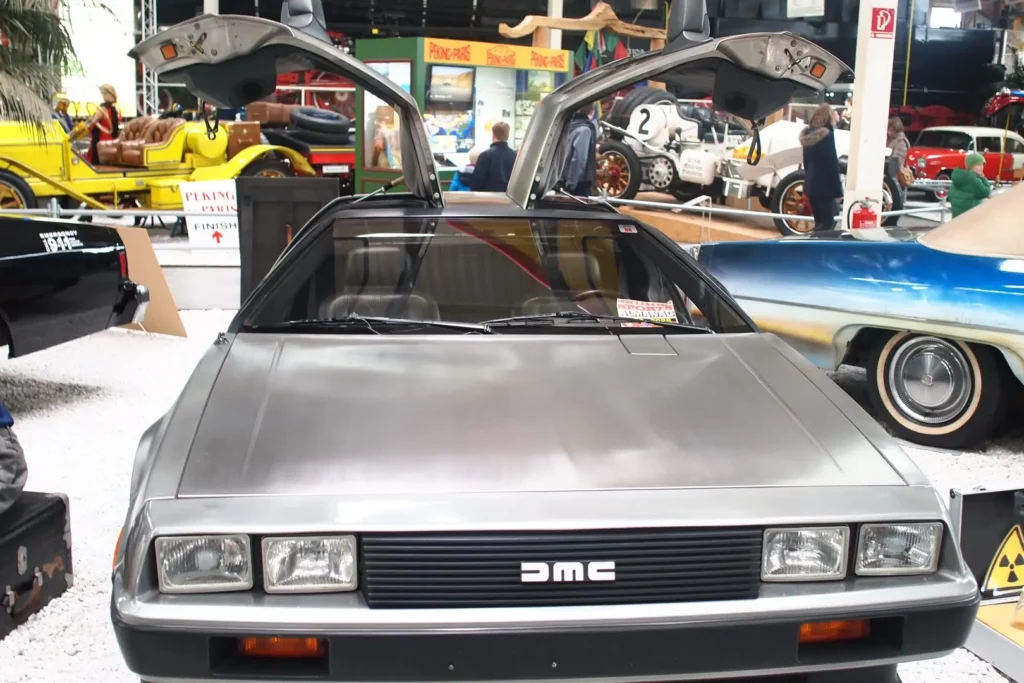
The thermal pool Thermen & Badewelt Sinsheim is now the second main attraction of the city. There are three parts here: saunas, a thermal pool and a sport pool. In the thermal pool, you can drink cocktails at the same time. And in the summer they move the roof, and this is an amazing feeling.
But it has two drawbacks: firstly, children from 5 to 16 years old can get there only on Saturday (for some, this is a dignity) and a high price.
Bad Friedrichshall, Heilbronn
Bad Friedrichshall (3) is a transport node. Of the sights – the salt mine (Salzbergwerk, Link).
The “castles” belonging to the Castle Road here are of very local importance and can safely be skipped.
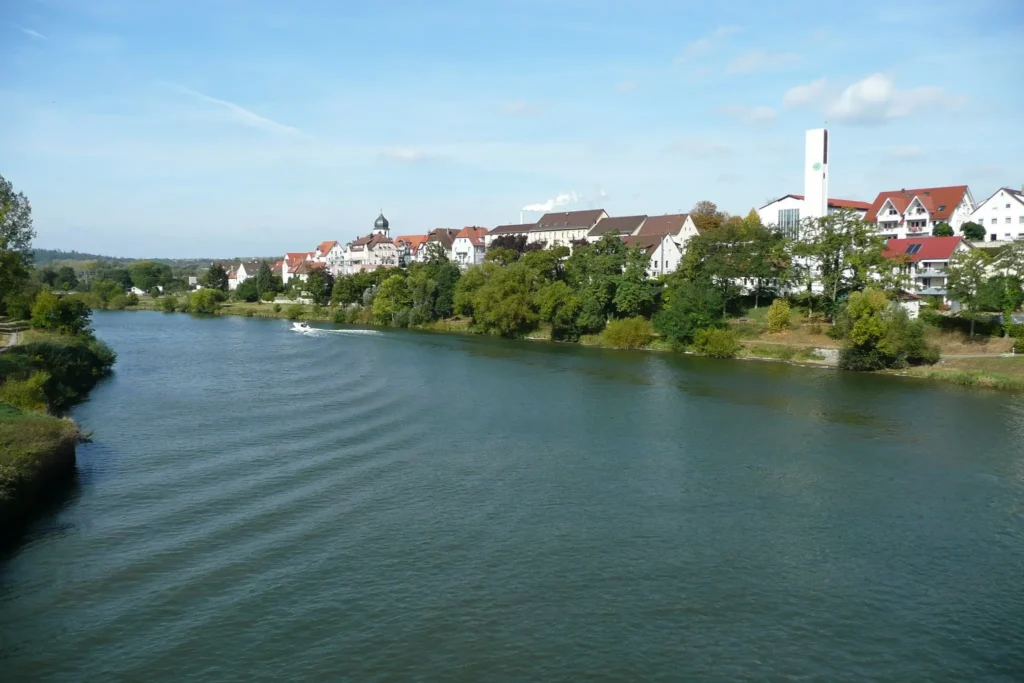
Heilbronn (4) – quite a large industrial city. It was once one of the oldest German cities (first mentioned in 741), a trading port on the river. In 1944, British aircraft destroyed 7,000 residents and 80 percent of buildings. Therefore, there is practically nothing to look at in it now.
From the restored and preserved remnants of history
- the Gothic Town Hall (1417, rebuilt 20 century) with a clock (1580) showing also the days of the week in the form of planets and the months in the form of zodiac signs. Figurs at the clock play every hour (engels, ships), rooster – every 4 hours;
- gothic cathedral of st. Kilian with a tower, considered one of the first Renaissance buildings north of the Alps (16th century), and the restored wooden late Gothic choirs from 1487.
The sights of Bad Friedrichshall and Heilbronn indicated on the official route can be completely neglected. Unless you are interested in Experimenta (Link) in Heilbronn – a science museum, very modern and of a high standard.
Neckarsulm
Neckarsulm, almost merged with Heilbronn, is interesting mainly for the fact that Audi is produced here (there are very rare factory tours), and for a small bicycle museum. Neckarsulm successfully destroys its excellent Aquatol bath, which the surrounding residents still cannot understand and forgive and now tourists definitely can skip the city.
Cycle route Neckarsulm – Schwäbisch Hall
The route goes through the towns of the Castle Road. Almost everywhere there is a separate cycle path, but in towns you sometimes have to ride on the roadway. To reduce the number of climbs, you schould to ride parallel to the railway line and in the direction from Schwäbisch Hall. The sights are listed further. 60 km.

5. Weinsberg
In Weinsberg it is worth stopping by for an hour to see the ruins of a local fortress with curious story.
Weinsberg Fortress – one of the oldest in Germany, was built already in the 10th century. During the struggle between the Hohenstaufens and Welfs (12th century), King Konrad laid siege to the fortress and invited the women to leave it, taking with them the most valuable things. The women left the fortress carrying their husbands. Konrad remained true to his word and spared everyone, and the fortress was named “Women’s Faithfulness” (Weibertreu). In the 16th century, during the peasant war, the fortress was destroyed.

In addition to the ruins of the fortress, the town is distinguished by a large number of roses and vineyards (there is a wine school and wineries). There is a rope park on the hill next to the fortress.
About autumn vineyards routes.
6, 7, 8. Öhringen, Neuenstein, Waldenburg
Öhringen (6) – a quite nice old town with a 17th century residence, an old church, several half-timbered streets and a fortress wall, in front of which there is a popular park.
At the same time, it cannot be called an obligatory stop on the route. If you decide to stop, then an hour and a half will be enough for everything.

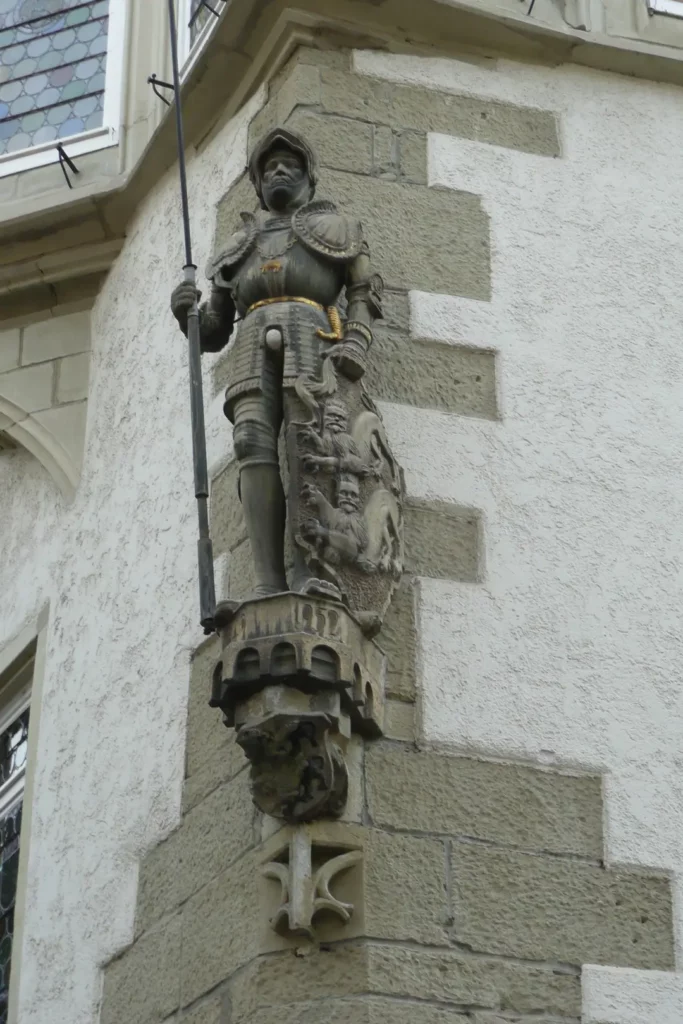
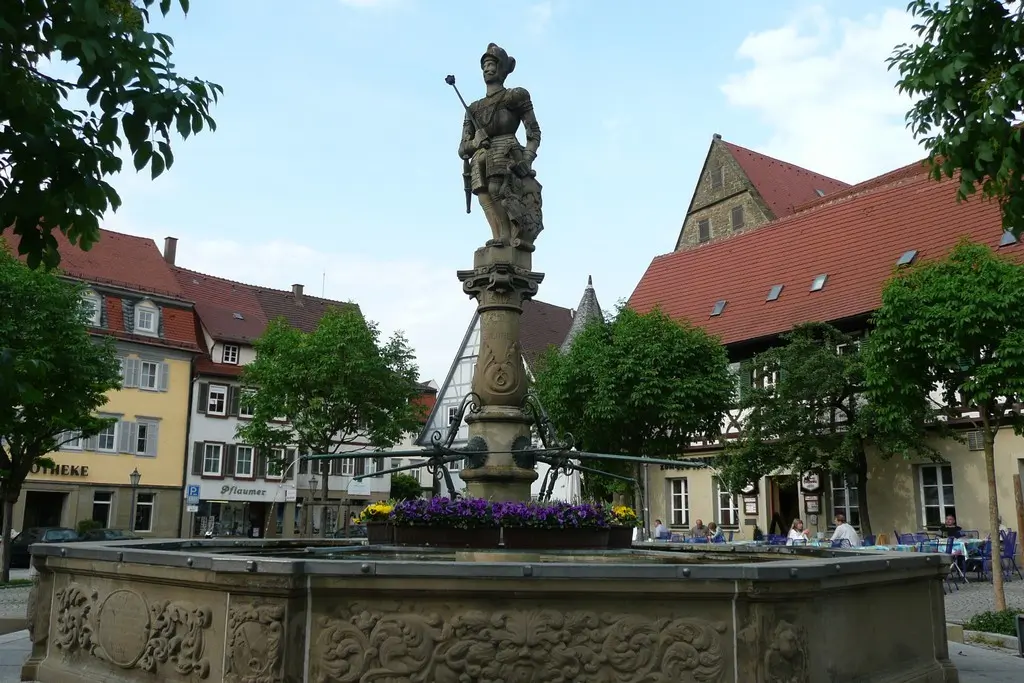
Neuenstein Palace (7, Link) is the former residence of the Counts of Hohenlohe, built in the 16th century on the site of the former castle. From the beginning of the 18th century the counts moved to Öhringen, and the palace was abandoned and used for various purposes. At the beginning of the 20th century it was restored, now there is a museum and an archive. In addition to the valuable things of the family of the Counts of Hohenlohe (and they were very wealthy), in the museum you can see the cuisine of the mid-15th century in original condition.
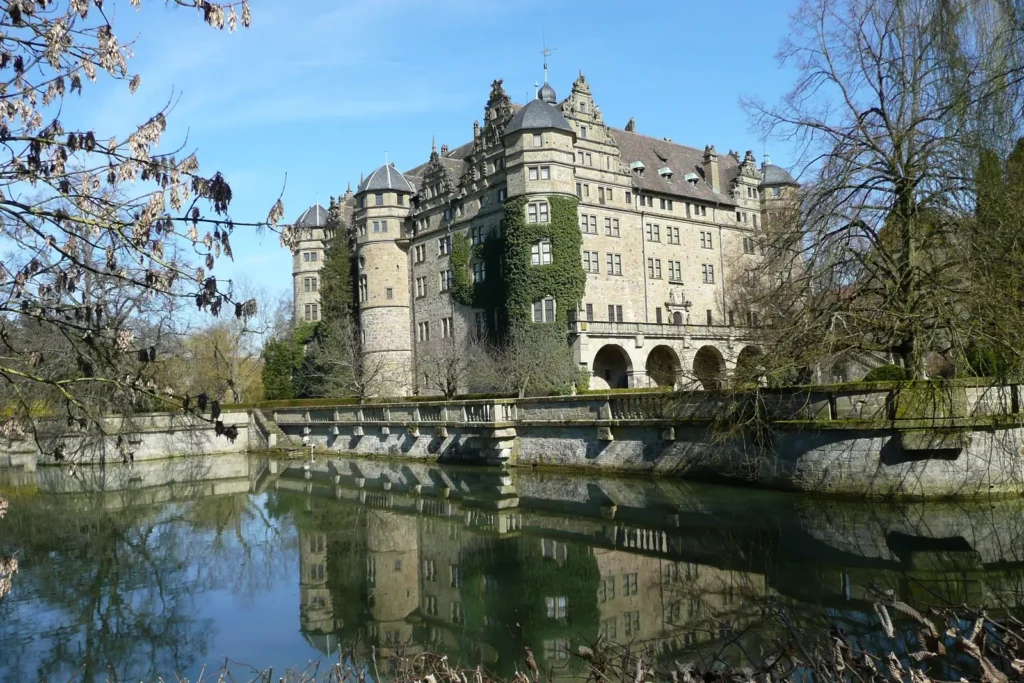
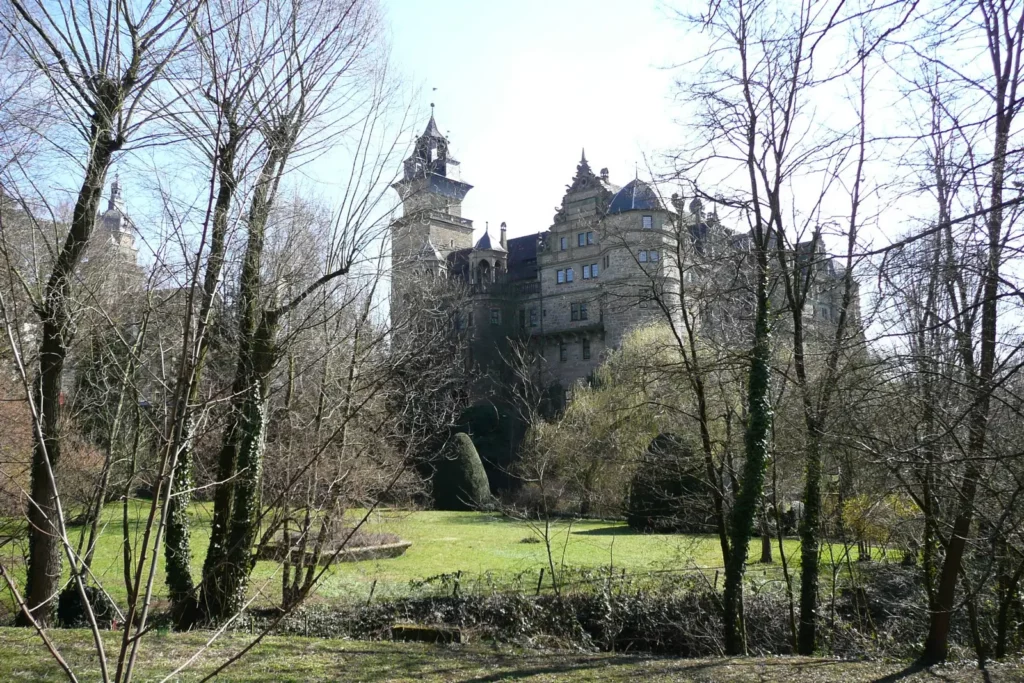
Waldenburg (8) is a walled town located on the top of a mountain. The fortress was the seat of one of the lines of the family of the Counts of Hohenlohe, then passed to another line. In 1945, the city was almost completely destroyed by the Americans, then rebuilt, so there is no particular point in visiting it. It looks best from below.
9. Schwäbisch Hall
Schwäbisch Hall is a picturesque half-timbered town. Give at least 3 hours to the city itself. Another 2 hours will take a walk to the Comburg monastery (by car, of course, faster) and another 3 hours – the Wackershofen Open-air Museum.
Read more about Schwäbisch Hall:
part 1 Town,
part 2 Pie and Spring festival,
part 3 Comburg and Wackershofen.
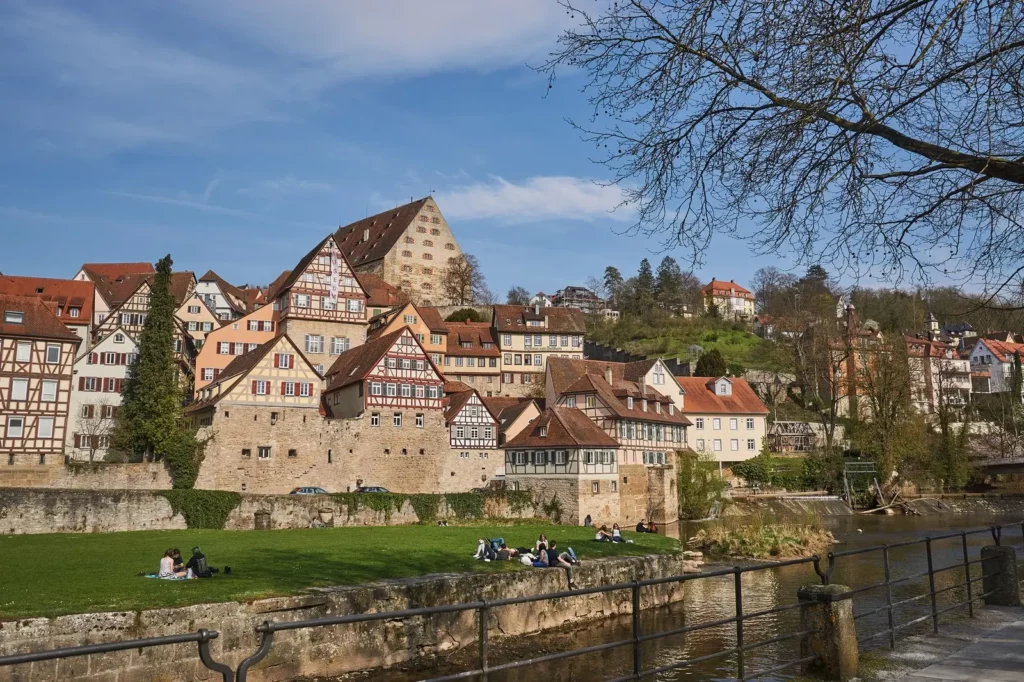
Follow me
Do you have any more questions? Use comments ⇓ or private communication form ⇨
From Schwäbisch Hall, the road can be laid through Langenburg (10) – with a castle (Link) and a museum of vintage cars. There used to be a rope park, but it fell victim to a tree disease.
Next on the map is Kirchberg an der Jagst (11) – a small town with a simple historical center. You can skip it.
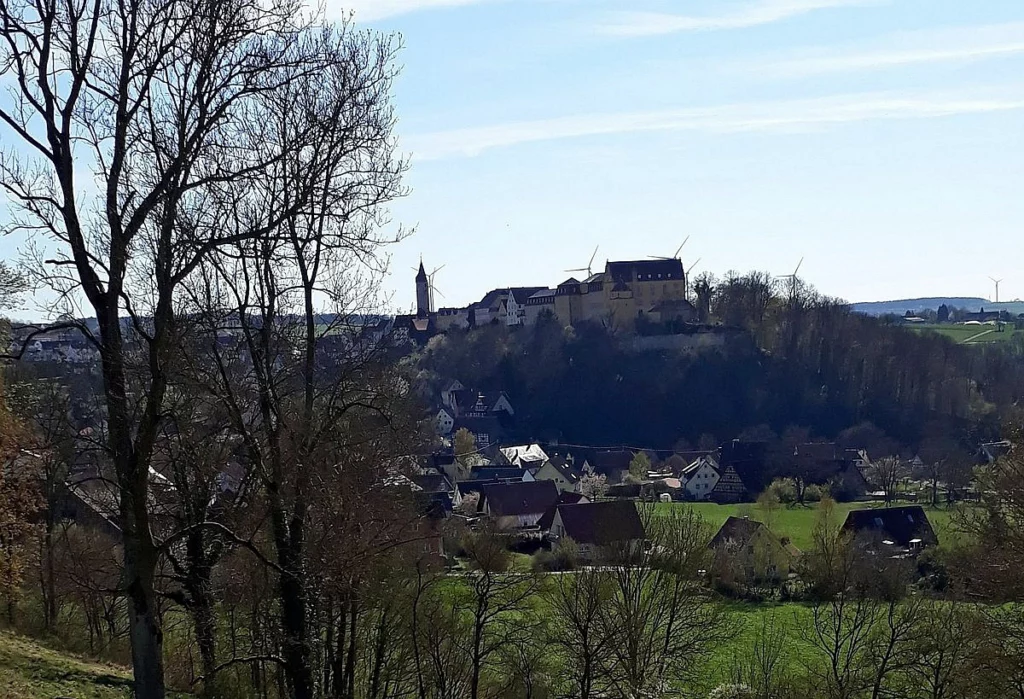
Rothenburg ob der Tauber
Rotenburg, rebuilt after the war, is a favorite tourist destination. It is difficult to say why it gained such popularity, although the less bombed and no less, and in some places more picturesque cities are much less known. Probably the promotion of the Romantic Road helped.
Read about Rothenburg
Next Castle Road part – Romantic Franconia
You need to devote half a day to the city.
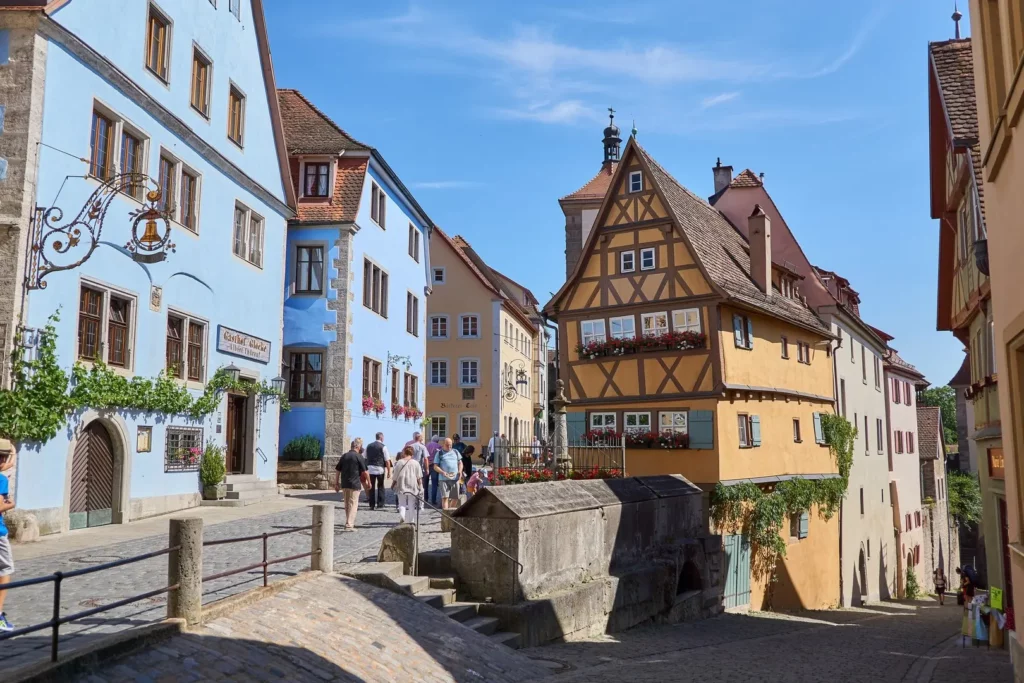
Kraichgau. Between Heilbronn and Stuttgart Region
12. Murrhardt
The town is located in the center of the Swabian-Franconian Forest Nature Park.
In the town itself there is an old monastery. The Limes line also runs through it – the fortifications of the ancient Romans that run through Württemberg. In most cases, almost nothing has been preserved, but in some places Roman camps, baths or ruins of watchtowers have been excavated and reconstructed.
Near the town there are hiking trails, a stream with a small (three-meter high) but pretty waterfall and a lake.
13. Beilstein and Grossbottwar
Beilstein has a fortress with falconry (Link), Half-timbered houses in the city centre.
Großbottwar invites you to visit the half-timbered old town and Lichtenberg Castle. Lichtenberg Castle has largely been preserved in the form in which it was built in the 12th century. It was lucky not to be destroyed during the wars and has been owned by the same family for several centuries. As the Wiki said, the castle can be visited on Sundays (courtyard, chapel, tower), and you can enter it when the family is away. However, there is no such information about this on the castle website. (Link)
The city also has an indoor playground called Croco Island (Link) and amusement park (football golf, trampolines) Campo del Sol (Link)
14. Lauffen am Neckar
A picturesque old town on the Neckar, with a historic center, a town hall in a former fortress, several old churches and an underground tunnel lane. Lauffen is an important wine-growing center and is located on the Baden-Württemberg Wine Route.
15. Schwaigern
The Leintal Zoo is located between Leingarten and Schwaigern (Link, Tram from Heilbronn, stop Schwaigern Ost) – a small zoo that specializes in monkeys and rare animal species. Germany’s largest group of chimpanzees lives here.
I don’t know how the experts feel, but the zoo doesn’t make the best impression on visitors because of the many bars instead of glass.
16. Eppingen
Another half-timbered town.
17. Maulbronn
Read more about Maulbronn
Maulbronn is known for its 12th-century Cistercian monastery, which is a UNESCO World Heritage Site. The monastery was listed as the best-preserved Cistercian monastery in Europe, and the water system built by the monks was also well preserved. Link.
You can get there by bus 700 from Bretten / Mühlacker or 734, 735 from Pforzheim, Klosterstadt-Express (train) runs on weekends and holidays from May to October.

18. Bretten
Bretten is an old half-timbered town. It differs from many others in the region in that it has additional entertainment – there is a wildlife park where animals can be fed and petted (link). The zoo is very basic, but opposite there is also a good climbing forest, with routes for children.
19. Karlsruhe
Karlsruhe is a relatively young city, founded in the 18th century according to a specially developed architectural plan. In the center of the city there is a castle, from which the streets branch out. Judging by the old pictures, it looked very impressive, but modern buildings, a lot of people and trams crowding into the city center destroy the feeling of the integrity of the architectural design.
In addition to numerous shops, there is also a good zoo and a large park near the castle, where you can take a ride on the narrow-gauge railway at the weekend.
In the Durlach there is a funicular and a climbing forest on the mountain. The view is mediocre, the climbing forest is good.
20. Bruchsal
Bruchsal was almost completely destroyed in the war and is therefore not interesting from an architectural point of view. But the baroque castle has been restored and you can visit it (Link). The castle also displays a collection of jukeboxes.


About Castle Road:
Part 1 Mannheim – Eberbach
Part 2 Zwingenberg – Bad Wimpfen
Part 4. Romantic Franconia map
#Castle Road
Do you enjoy the site without cookies? This means that I work for you at my own expense.
Perhaps you would like to support my work here.
Or change your cookie settings here. I don’t use personalized ads

